The Making Of... Left 4 Dead
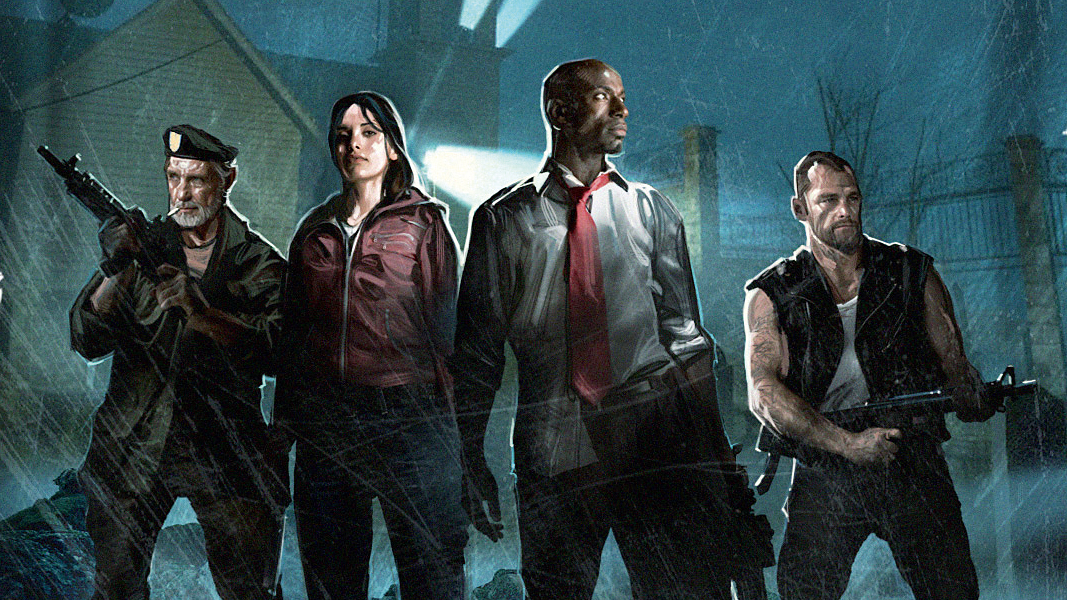
Chet Faliszek knows more about the living dead than is healthy. In October 2008, a month before the launch of Valve’s zombie-horror game Left 4 Dead, the writer was standing in a supermarket ice-cream aisle when a girl came running over and enlisted his help in settling an argument with her boyfriend. “Hey, mister,” she asked without a flicker of embarrassment. “Can zombies swim or not?” Faliszek, Valve’s resident undead expert, stroked his beard and offered an extensive insight into the aquatic abilities of ambulatory corpses. “She was horrified by the depth and detail of my answer,” he laughs.
Everyone gets zombies: they’re dead or infected, they shamble or charge, and they want to eat your brains. Human nature is rather more slippery. When the L4D team began running external playtests for its horror shooter, it was shocked by what players got up to. “It was kind of like watching a lab rat experiment,” recalls Mike Booth, then CEO of Turtle Rock Studios, where L4D originated. “Some people would declare themselves the leader and bark instructions, whether they were qualified to or not. Other guys just wanted to help out and make sure everyone had health kits. A few would just wait for the moment to stab you in the back.”
Ask Valve staff about their favourite playtest moments and the stories come thick and fast. There were the LAPD cops who arrived in full-on bravado mode and were instantly turned into zombie chow. Then there was the time when four newbies spawned on the rooftop at the beginning of the No Mercy map and turned into lemmings.
“The first one just jumps off the roof and ledge hangs,” remembers Faliszek. “The other three just inexplicably followed him. Why they would do that, I don’t know. I think they thought the first one knew what they were doing so they followed. We decided to call that an outlying data point and just hoped it never happened again!”
Perhaps the most illuminating anecdote, though, is the one about the kid who brought his dad to play alongside two Counter-Strike pros. As the father failed badly, the kid began ignoring him – but the veterans ushered him through. “They protected him – they went back for him when he trailed behind,” remembers Faliszek. “In return, he was able to help them up when they were incapacitated. Watching that interaction between strangers and realising that it could happen in the game was one of those moments like: ‘OK, this is going to work. We’ve really got something here’.”
Just like in the best zombie movies, the real drama in L4D lies in the relationships between the living, not the dead. The infected are just a pretext for collapsing the social order and forcing people to depend on one another to survive. It’s the ultimate online co-op experience, a game that requires not just headshot skills but communication, collaboration and confidence in your fellow player.
L4D began in the offices of Turtle Rock Studios in 2004, just after Valve’s favourite Orange County developers had shipped Counter-Strike: Condition Zero. Terror Strike was a B-movie horror mod that saw a team of counter terrorists planting zombie bait on a night version of the CS: Italy map, then fending off an overwhelming horde of living dead. It was an incredibly intense experience.
Weekly digests, tales from the communities you love, and more
When Booth showed the prototype to Faliszek and Erik Wolpaw, the Valve staffers couldn’t stop playing it. Big deadheads, who’d worked on an unrealised online text game called Zombie World in the ’90s, they instantly saw the appeal. “It captured the thing we always loved about the zombies,” says Faliszek. “It’s you and your buddies – its co-op, it’s social, you’re hanging out laughing and having fun and these horrible things are happening and coming at you.”

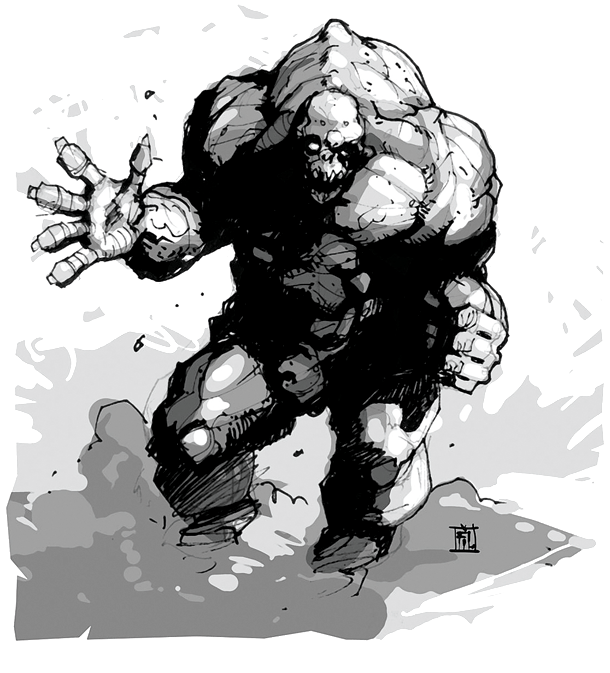
Although cut from the finished game, the Screamer lives on: his horde-attracting abilities evolved into the Boomer’s vomit attack, while his ear-piercing vocals are used to announce each horde wave during the finale events.
By that afternoon, Valve’s CEO Gabe Newell had heard about the prototype and offered Booth the assistance of Faliszek and Wolpaw in developing it further. It was a brilliant piece of co-op matchmaking, Turtle Rock’s formidable AI skills combining with Valve’s passion for storytelling (Valve eventually acquired Turtle Rock in January 2008). Together, the two studios proceeded to thrash out where to take the prototype. “We realised we had this nugget of gameplay where a small co-operative group had to deal with hundreds of melee monsters,” explains Booth, a veteran programmer with a passion for AI systems.
“We wanted certain things to happen at certain places, sort of the traditional scripting methods of having dramatic experiences. But we immediately ran into the fact that players are smart and they memorise all that stuff. We’d come from the background of Counter-Strike and we wanted to create something that was infinitely replayable.”
What they set out to do over the next few years of constant playtesting and iteration was blend two seemingly opposed objectives: emergent, co-op gameplay and a dramatic interactive experience that would mimic the peaks and trough of a horror movie. Much like the living-yet-dead zombies, it seemed like an impossible mash-up. But if the dead could walk, was it possible to make a game that was emergent and yet structured at the same time?
No one forgets their first horde. They run towards you screeching like birds of prey, eyes flashing hatred, limbs flailing and teeth bared. “One of my favourite reactions, when people play L4D for the first time, is when they see that mob running at them from a distance,” laughs Booth. “They’re like: ‘Oh my, here they come. Oh, oh, oh… OH MY GOD!’” It’s hard to believe, then, that L4D only ever has 30 zombies in the world at any one time. The game’s procedural population system constantly adds and removes them behind your back to give the illusion of thousands of living dead.
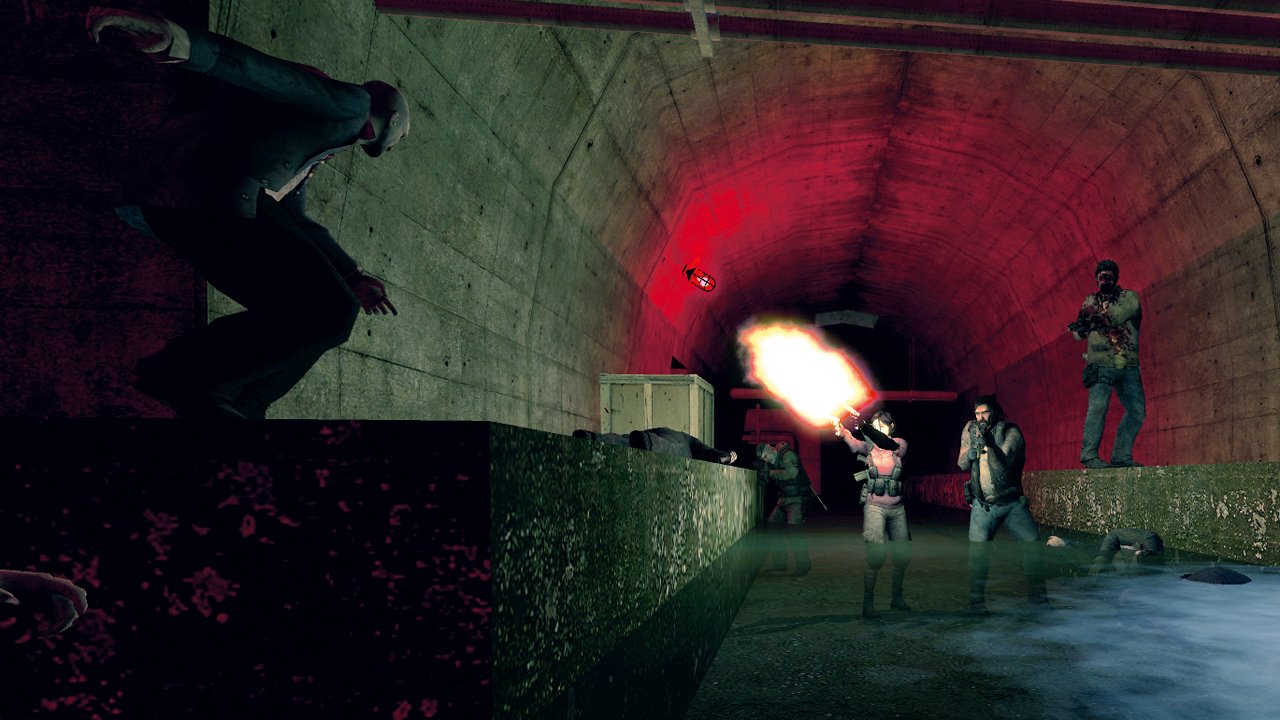
Pulling the strings behind the scenes is the AI Director, an artificial intelligence system that’s responsible for creating the highs and lows of the in-game drama. By controlling where and when zombies, mobs and special infected spawn, and by guiding the audio cues and weapon/item drops, the AI Director can modulate how the game responds to players’ actions and abilities. “We needed to make sure that certain tempos and pacing happened on a regular basis to keep people’s excitement and attention going,” explains Booth. “For L4D that was basically just me and some C++ code making that happen. In L4D2 we generalised it into a larger tools framework.”
This is how technologists approach the art of drama, a technique that marks the gulf between storytelling in games as opposed to more traditional linear media. Monitoring players’ actions and emotional responses – how agitated they seem, how accurate their shooting is, how well they are co-operating – the AI Director is able to form a strategy to respond to their experience. Forget Hollywood’s three-act structure, this is something much more dynamic and flexible.
In fact, L4D could be the videogame equivalent of hooking up a horror movie audience to ECG machines and letting a filmmaker adjust scenes on the fly to drive them to the brink of a heart attack, then calm them down before unleashing the next onslaught. Imagine if Alfred Hitchcock – or better yet, schlockmeister William Castle, the canny, carny genius behind gimmicks like the vibrating auditorium seats that accompanied 1959’s The Tingler – had access to that kind of interactive, realtime audience feedback.
The genius of L4D was that it took emergent narrative to the next level. No surprise, then, to discover that Valve’s in-house psychologist Mike Ambinder has since been experimenting with new ways to tailor gameplay to players’ emotional responses: monitoring facial expressions, testing alternative control methods (eyeball aiming, for instance) and developing techniques to measure players’ physiological signals. In years to come, L4D may mark the beginnings of the ultimate horror videogame: one that uses biofeedback to delve into your subconscious and scare you witless.Horror films were big in the Valve office.
“One of the goals of L4D’s art direction, from day one, was to try and capture the feel of a horror movie,” explains art director Randy Lundeen. “We ended up using a whole set of cinematic effects for our visual formula – colour-correction, film grain, vignette and local contrast. We also relied heavily on lighting to create a sense of an abandoned post-apocalyptic setting.”
The chief inspiration was 28 Days Later. “That movie did such a great job of creating a creepy post-apocalyptic setting,” Lundeen continues. “Their environments gave such a detailed background of the events happening outside of the main plot – abandoned vehicles, notes left by survivors, survivor holdout areas. We loved the idea that the setting could tell the story of what had happened before the players arrived.”
Like the rest of L4D, the survivors went through a variety of iterations. “With the first set of designs, all three male characters looked like they came from the same place and could hang out at a bar,” explain modeller Miles Estes. One of the biggest changes was Louis, who morphed from a hirsute, religious nutjob into a nine-to-five office worker based on a buddy Faliszek and Wolpaw had back home in Cleveland. “I remember helping him move house,” says Faliszek. “He dropped something, ruined it and still made a joke about it. That’s the perfect guy you want in the zombie apocalypse.”
One of L4D’s best horror techniques is its clever use of anticipation, the sobbing of an unseen Witch, or the screech of a nearby Hunter scaring you before the monsters even appear. Yet for many players, the game’s most terrifying enemies aren’t the special infected but the zombie masses, the wanderers that populate each map. Lying around, leaning against walls and vomiting, the ghouls initially appear harmless. “It’s easy to identify with the zombies and say: ‘Oh, they could be me’,” explains Booth, who cites fears over a potential bird-flu pandemic in 2005 as an inspiration.
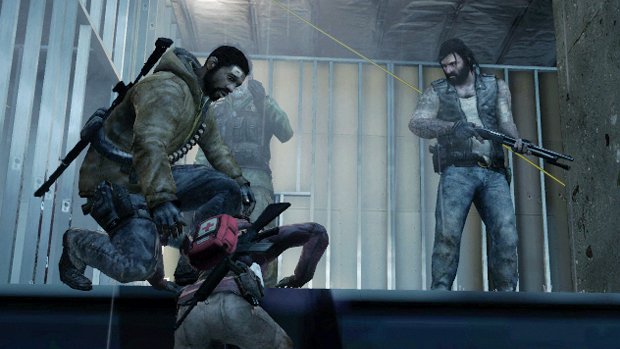
“We kind of pushed on that with the wandering infected, how they stumble around and vomit and just look like they’re having the worst flu ever. We wanted that combination of pity and ‘it could be me’ with ‘this is horrible’ and then ‘Oh my God, here they come, we have to survive’.” Indeed, German censors were so appalled by the juxtaposition that they ordered the ‘passive’ animations cut. If a German player joins your online session, the zombies will stop lying down. They’ll still try to kill you, though.
Ask Valve staff what they were most afraid of during the years the game was in development and the answer isn’t zombies, or Boomers or even the Witch. It’s the real-life players for whom they designed the experience. Back in 2005, online co-op was still such a new game mode that nobody was certain L4D would survive its encounter with the unpredictability of human behaviour. While the AI Director crafted the drama with scientific precision, it amounted to little if the game didn’t encourage its players to invest in the fiction.
“We had no idea whether in the wild random people would go out of their way to let somebody out of a closet [the chosen respawn point for dead players in campaign mode],” admits Booth. “We really pushed the design of the game so that you wanted to have that extra gun and it worked.”
In playtests, Counter-Strike veterans often found it hard to adapt to the game’s strategies for forcing co-operation. “They would ignore their team and run off with just a pistol – ‘I’m going to do the Rambo thing’,” Faliszek groans. Of course, they were quickly pounced on by a Hunter, something that underlined the role of the Special Infected in promoting group cohesion. Boomers, Smokers, Hunters, the Witch and the Tank were all designed to break up the group – thereby forcing players to stick together more.
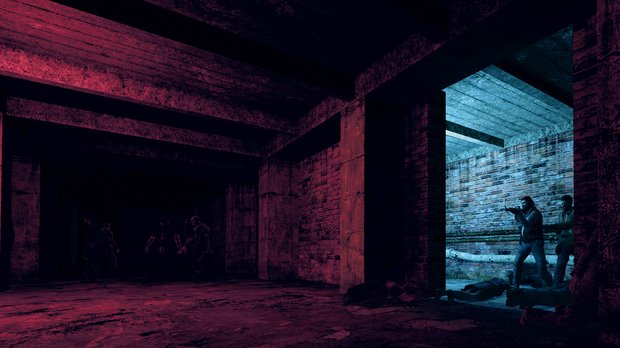
Cohesion was so important that when ideas were floated about the possibility of dead players joining the horde, the developers decided against it. “It’s in the zombie canon: don’t get bit or you’ll turn,” says Booth. “Honestly, there is a lot of really interesting gameplay fodder there. Like, if you knew you had been bitten and you’re going to turn in five minutes, do you tell your team yet or not? Frankly, though, that’s a different game.” Faliszek agrees: “It’s like in Team Fortress when you get team swap at a bad time and you get mad. We really wanted the survivors always to know that the person on their team was going to have their backs; they were working for them, working with them.”
When the game was released in November 2008, the impact of the co-op approach was quickly felt. One surprise was the unprecedented number of female players who ventured into the traditionally testosterone-soaked world of the online shooter. “I think it’s one of the first games where you’re not just playing but being social, and helping each other in a very direct way that is meaningful,” Booth suggests, then adds with a chuckle: “I’m proud that we’ve prepared future generations for a zombie apocalypse.”
Read more from Edge here. Or take advantage of our subscription offers for print and digital editions.
Edge magazine was launched in 1993 with a mission to dig deep into the inner workings of the international videogame industry, quickly building a reputation for next-level analysis, features, interviews and reviews that holds fast nearly 30 years on.



